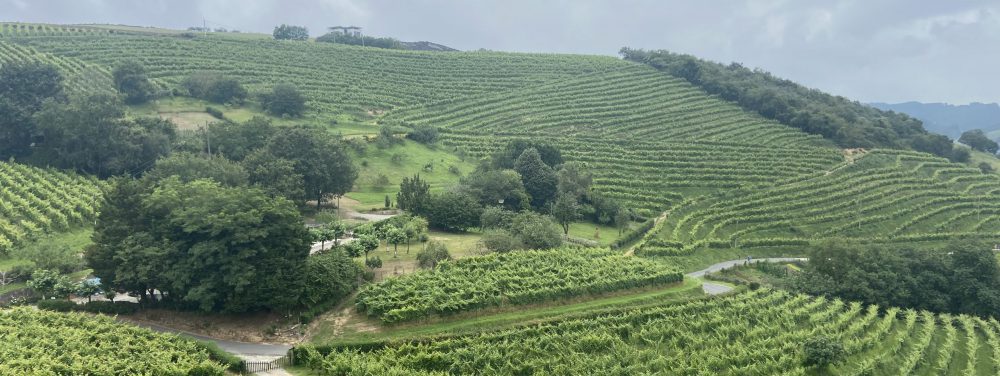I’ve always thought of myself as a “wine girly.” Meaning, I consider wine my preferred choice of alcohol. And while I am not old enough to indulge in the alcoholic beverage in America, that never stopped me from fantasizing about the day that I could. I loved the idea of curling up with a good book and a glass of sweet wine at the end of a long day. With the drinking age being lower in San Sebastian, Spain I was able to time travel into that day and have experience 2.5 years earlier.
My time in Spain has been nothing short of therapeutic, eye opening, and peaceful. I spend most of my nights walking either alone or with a couple friends aimlessly through the city translating menus, restaurant hopping, and learning how to communicate effectively in Spanish. At dinner I look forward to trying a new type of wine every night. My first day I tried vino tinto– red wine. I learned that while to me, it looks the most sophisticated to drink, it is not for the faint of heart. Its strong smell and rich taste is a little overwhelming for new wine drinkers like myself. I’ve found an appreciation for vino blanco – white wine as well as for rosé. Both are softer and sweeter wines.
While it’s been a pleasure to splurge on a variety of Spanish wines, it was an absolute honor to visit a winery in Zarautz. Talai Berri is a 5th generation owned winery. We were given a walking tour where we learned how wine is made – a great process that occurs long before wine can be purchased off of a shelf.
In the winter grape vines are clipped to small sticks to keep them from breaking and allowing them to continue to grow. In the spring they start to bud and flower but they won’t be fully grown and eligible for harvesting for another 60 or so days. The grapes are then plucked and put on a conveyor belt for further inspection. By hand the employees of Talai Berri inspect the graped, throwing out any that appear rotten. After the grapes are thoroughly checked they go into a machine that crushes them. White wine and red wine are made separately. Rosé, which is a more pinkish wine, is a mixture of both red and white grapes. I learned that in order for wine to appear red they must thoroughly crush the skin that will end up dying the wine. After the grapes are liquified, they are put in a big cylinder container to cool down. This process takes place around September. While cooling, the wine is further separated ensuring a smooth liquid finish with no excess skin peels. This process takes about 24 hours. Afterwards, the soon to be wine is put in a different cylinder container that’s job is to heat up and cool down the wine until it is properly fermented. A couple weeks later the wine is ready, it is placed back in the cooling container where it sits until mid November waiting to be bottled. After, it is bottled, labeled, and ready to be sold.
I’ll admit, I never put much thought into how wine was made before my trip to the winery. I simply just appreciated it for the wonderful drink that it is. I can proudly admit now that I have a certain sense of admiration for the beverage that I didn’t have before. Especially since wine is such a huge part of the culture in Spain, I liked learning about how it is made. The next time I sip on some wine I will think of the time, dedication, hard work, and many many grapes that it took for me to be able to indulge in a glass of wine.
The tour of the winery gave me time to reflect on life back home in the States. Before coming to Spain I found myself lacking patience and in turn being anxious about my future. I sometimes worried that it was taking too long to get to where I wanted to be in life. If the winery and my time in Spain has taught me anything it is to trust the process and to live in the moment. I’ve loved every second of my time here; San Sebastián in a way, has given me a new perspective on life. It has taught me the art of patience and that just like wine, all good things take time!
